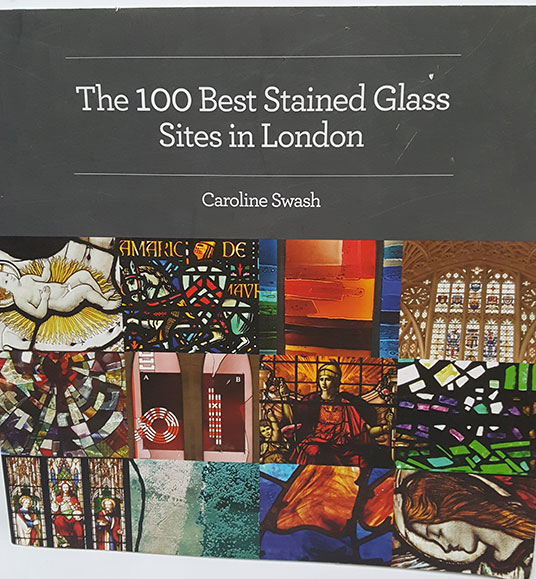This website uses cookies
This website uses cookies to enable it to function properly and to analyse how the website is used. Please click 'Close' to accept and continue using the website.


The 100 Best Stained Glass Sites In London
Caroline Swash (Malvern Arts Press, 250pp, £25)
Reviewed by Diana Coulter

Some guides to London’s architecture fit in your pocket, others answer questions arising from more serendipitous strolls. Caroline Swash plugs a gap by focusing on stained glass. Her 2001 guide 14 walks themed around stained glass offered valuable and personal insights into examples in and around London. Teaching at Central School of Art & Design inspired her to seek examples for her students to visit and these form the heart of her new book ‘dedicated to those who commission stained glass windows’.
Pre-Fire of London stained glass survivals are rare, while the Blitz led to further losses and a regeneration opportunity. Stained and architectural glass made a positive and colourful contribution to the post-war world. Swash therefore includes museums, the V&A for example, where older glass is displayed, which was not necessarily made for London buildings. ‘Sites’ means that all the works ‘have been made for an architectural context’. A minor niggle perhaps, and she shows extremely well that stained glass is not just ecclesiastical: about a quarter of the sites are shopping centres, hotels, hospitals and offices, an indicator of shifting patronage.
Places of worship are not exclusively Anglican; there are synagogues, non-conformist and Catholic buildings as well as a Sikh Temple in Southall (2001). London ‘has been extended’ to cover sites further afield, including Slough. This extension, primarily into west London, may have risked exclusion of significant glass in the City, like Helen Whittaker’s imaginative incorporation of Kempe fragments in the east window at St Ethelburgha’s, Bishopsgate, or in east London, Reginald Lloyd’s west gable in St Boniface’s, Whitechapel. Curiously, the index references non-existent pages, as if a short guide to artists was planned that the biographical information in the text made redundant.
20th and 21st century glass predominates. Lawrence Lee, leader of the nave window team at Coventry Cathedral, is represented at 16 sites. His Royal Society of Chemistry staircase window in glass appliqué is a reminder of how innovative the immediate post-war period was. Innovation flourished in the major London-based glazing firms, such as Powells, and Goddard & Gibbs, where Swash worked. It also flourished at the Central School, and commissions by its alumni are described, including Ruth Kersley’s designs for the Jewish Free School Synagogue, Harrow (2000). Swash’s own work can be seen at St Barnabas, Dulwich (1994).
The book is lavishly illustrated in colour, and many images have reproduced well, though some could be crisper. However, this does not detract from the book’s value as one of the few to examine C20 stained glass. Swash is a good raconteur, and her personal touch comes across in this excellent guide.
We are still populating our book review section. You will be able to search by book name, author or date of publication.

Become a C20 member today and help save our modern design heritage.